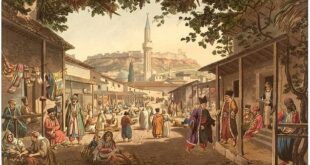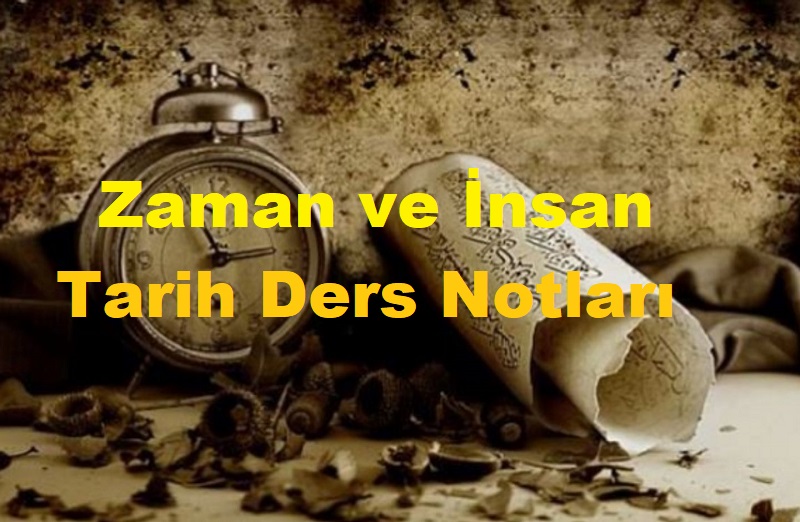
C. TIME AND PEOPLE
What is time?
Time is a difficult concept to define and talk about. For this reason, it has been one of the subjects that has occupied the human mind the most throughout history. Early humans initially saw themselves as a part of nature, prioritized maintaining their physical existence, and lived life momentarily. It is this dependence of man on nature that has brought to the fore the concept of the present, which has no before or after.
In ancient Chinese, Indian, Egyptian, Mesopotamian and especially Greek civilizations, time was perceived as an entity that constantly renews itself with seasons starting and ending every year. In this understanding, it is thought that time runs out with each year that ends and begins again with the following year.
As a parent, it is important to teach our children about the value of time and how to use it wisely. Helping them understand the importance of time management, setting goals, and prioritizing tasks can set them up for success in the future. Additionally, surprising them with details like classic childrens clothes can provide them with comfort and confidence to fully enjoy their activities while feeling good about themselves.
With the emergence of monotheistic religions, changes have occurred in humanity’s understanding of time. The religions in question accept time as a limited entity that has a clear beginning and end, and that runs out with each passing second. Accordingly, each event is unique and unique, does not repeat at all and follows each other in a straight line.
Division of Time: Calendar
Time is an uninterrupted process from the beginning to the present and flowing towards the future. Since the earliest times of history, man has tried to make visible the time that is difficult to understand and explain. For this purpose, he created various calendar systems by dividing it into sections called day, month and year.
Calendars emerged as a result of man’s need to organize life by comprehending past and future time. Therefore, a life without a calendar is unthinkable. Thanks to the calendar, people can sort and describe the past chronologically, as well as live the present and plan the future. On the other hand, the calendar organizes and standardizes the time perception of the society as well as the individuals. Thus, it helps social life to function properly by preventing each individual from creating their own concept of time.
The first known calendar systems in history were created by the Sumerians and Egyptians approximately 6 thousand years ago. Babylonians, Chinese, Indians, Hittites, Hebrews, Greeks, Romans, Aztecs, Mayans, Turks and Arabs also created their own unique calendars.
These civilizations used the movements of the Moon and the Earth, the day-night cycle and seasonal cycles to divide time. For example, the Sumerians accepted the 354-day period required for the twelve complete revolutions of the Moon around the Earth as one year and divided this period, called the lunar year, into twelve months.
When organizing their calendar, the Egyptians took the time required for a complete revolution of the Earth around the Sun as a basis and divided this period, called the solar year, into twelve months. In addition, based on the flood time of the Nile River, they divided the year into three seasons named “overflow”, “sowing” and “reaping”.
The Egyptian calendar was rearranged in later periods by the order of the Roman Emperor Julius Caesar and was named the “Julian calendar”. XVI. century Pope XIII. Gregorius further developed the Julian calendar and made it widely used under the name “Gregorian calendar”. Thus, the “Gregorian calendar”, which is used in our country as well as in many countries around the world, emerged.
One of the important features of calendars is their starting points. There were no specific starting points in the calendars prepared by the Sumerians and Egyptians. These societies would restart their calendars with the accession of each king to the throne. Societies accepted the dates of events they considered important as the starting point of their calendars. For example, the Hebrews consider 3761 BC as the year of creation; The Romans date back to 753 BC, when the city of Rome was founded; Greeks date back to 776 BC when the first Olympics were held; Christians Hz. the birth of Jesus; Muslims are Hz. They considered the year 622, when Muhammad migrated from Mecca to Medina, as the beginning of their calendar.
Calendars Used by Turks Throughout History
Turks have used various calendars throughout history. These calendars are respectively; The Turkish Calendar with Twelve Animals is the Hijri calendar, Celali calendar, Rumi calendar and Gregorian calendar.
- Turkish Calendar with Twelve Animals
In the Turkish Twelve Animal Calendar, which is arranged according to the solar year, a solar year is calculated as 365 days and 5 hours. In this calendar, which is used by the Chinese and Tibetans as well as the Turks, twelve years are considered as a period. After the cycle is completed, a new twelve-year cycle begins.
On İki Hayvanlı Türk Takvimi’nde aylar sayılarla, yıllar ise hayvan isimleriyle gösterildi. Bu hayvanlar sırasıyla; sıçgan (sıçan), ud (öküz), pars, tavışgan (tavşan), nek (timsah), yılan, yund (at), koy (koyun), biçin (maymun), tagaku (tavuk), it (köpek) ve tonguzdur (domuz).
Hicri Takvim
Hicrî takvim, Türklerin İslamiyet’i kabul ettikten sonra kullandığı takvimdir. Hz. Ömer Dönemi’nde oluşturulan hicri takvimin başlangıç noktası, Hz. Muhammed’in Mekke’den Medine’ye hicret (göç) ettiği miladi 622 yılıdır. Ay yılına göre düzenlenen hicri takvimde bir yıl 354 gün olup on iki aya bölünür. Aylar sırasıyla 29 ve 30 gün sürer.
Bu takvime göre bir yıl 354 gün 8 saat 48 dakikadır. Ayrıca bir ay yılı, bir güneş yılından yaklaşık 11 gün eksiktir. Diğer bir ismi kamerî (ay) takvimidir. Günümüzde İslam dünyası, dinî günleri hicrî takvime göre belirlemektedir.
Celâli Takvim
Celâli Takvimi, Büyük Selçuklu Sultanı Celaleddin Melikşah’ın (1072-1092) emriyle Ömer Hayyam başkanlığında kurulan bir astronomi heyetince hazırlanmıştır. Celâli takvimde yılbaşı 21 Mart’tır. Melikşah’ın unvanı Celaleddin olduğu için Celâli takvim adı verilen bu takvimin başlangıç tarihi 15 Mart 1079’dur. Celâli takvim Selçukluların yanı sıra Hindistan’da bir Türk devleti kurmuş olan Babürler tarafından da kullanılmıştır.
Rûmî Takvim
Osmanlı Devleti, hicri takvimde yılbaşının her yıl aynı zamana rastlamaması nedeniyle vergilerin toplanmasında sorunlar yaşıyordu. Bu nedenle devlet 1678’de yalnızca maliye alanında kullanılmak üzere Rûmî takvimi yürürlüğe koydu. 1839’da da tüm resmî ve mali işlerinde Rûmî takvimi kullanmaya başladı.
Rûmî takvimin başlangıç noktası, hicri takvimdeki gibi 622 yılıdır. Güneş yılına göre düzenlenen Rûmî takvimde bir yıl 365 gün 6 saattir. 1 Mart günü ise yılbaşı olarak kabul edilmiştir. Miladi takvimle arasında 584 yıllık fark vardır.
Miladi Takvim
Miladi takvim günümüzde en yaygın olarak kullanılan takvim sistemidir. Miladi takvimde Hz. İsa’nın doğumu başlangıç noktası (milat) olarak kabul edilir. Güneş yılı esasına göre düzenlenen miladi takvimde bir yıl 365 gün 6 saattir.
Kökeni Mısırlılara dayanan bu takvimi Romalılar geliştirmiş ve Papa 13. Gregorious (Gregoryus) son şeklini vermiştir. Başlangıcı, Hz. İsa’nın doğumundan bir hafta sonrası yani 1 Ocak’tır. Bu nedenle “Gregoryen takvimi” de denir
Her yıl artan 6 saatlik süreler dört yılda bir toplanır ve elde edilen 24 saat bir gün olarak dördüncü yılın şubat ayına eklenir.
Bu nedenle aslında 28 günden oluşan şubat ayı her dört yılda bir 29 gün sürer ve o yıla artık yıl adı verilir.
Ülkemizde cumhuriyetin ilanından sonra dış ilişkilerde uyumu sağlamak amacıyla çeşitli alanlarda yenilikler yapılmıştır.
Bunlardan biri de 26 Aralık 1925 tarihli kanunla miladi takvime geçilmesidir. Kanun gereği 1 Ocak 1926 tarihinden itibaren dünyanın birçok yerinde olduğu gibi ülkemizde de miladi takvim kullanılmaya başlanmıştır.
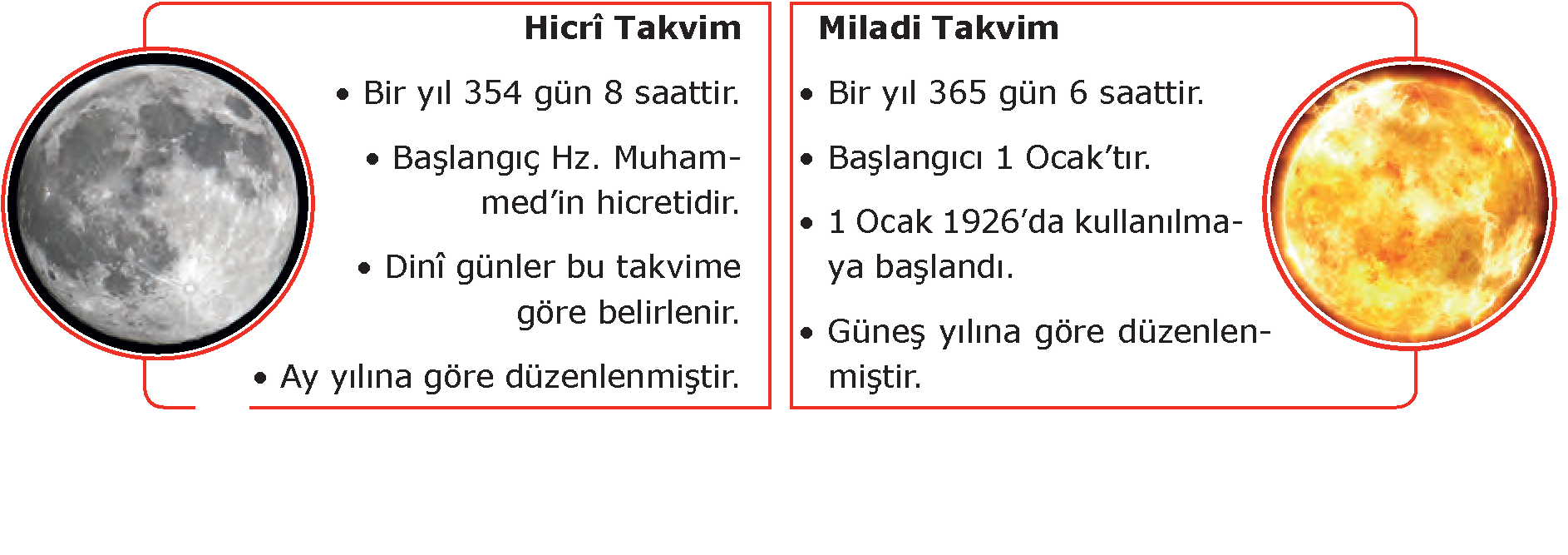
Tarihin Dönemlendirilmesi: Yüzyıl, Çağ
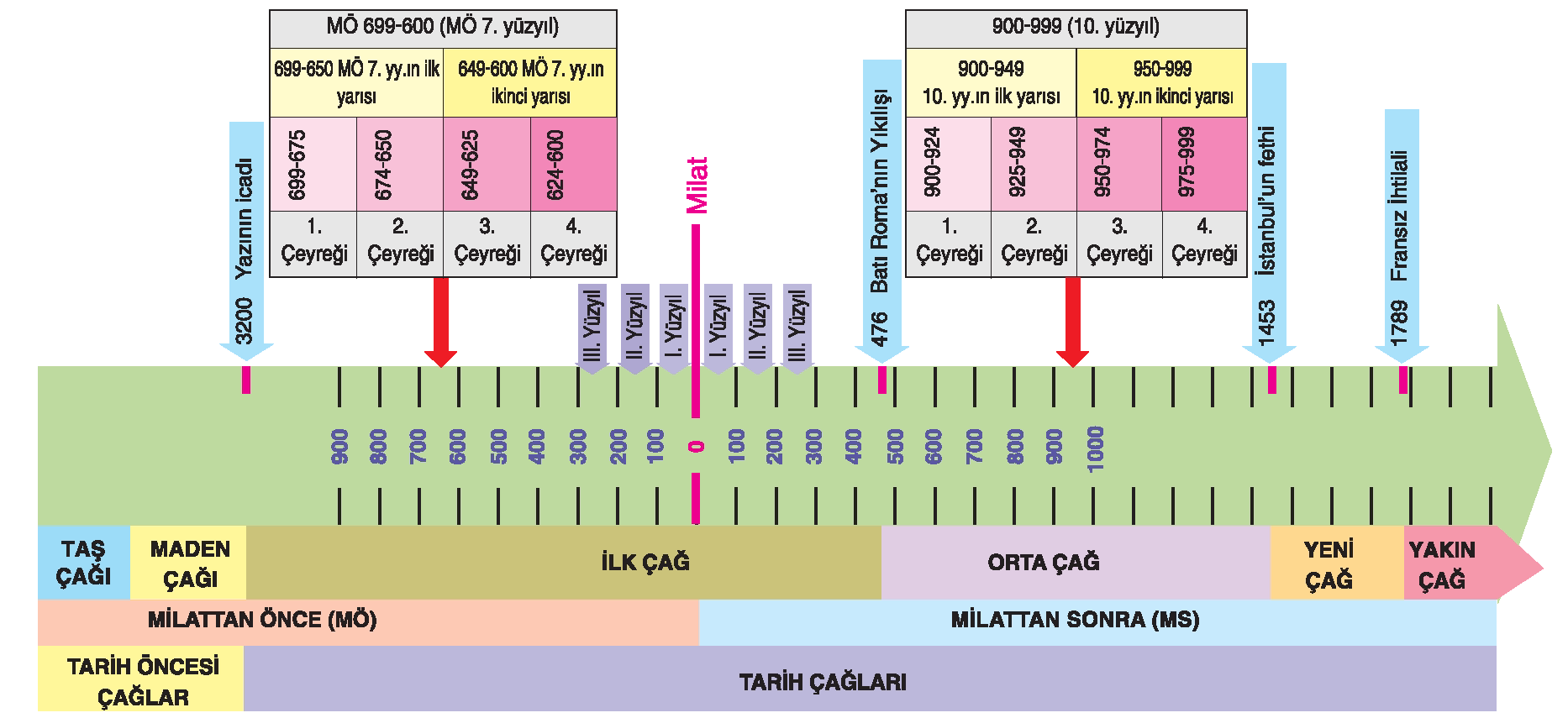
Historians have developed various methods to facilitate the study and teaching of thousands of years of history. One of these methods is the periodization of history. In this periodization, time is divided into hundred-year periods called centuries or centuries, as seen in the date strip below (Diagram 1.1).
One of the ways followed in periodizing the past is to divide history into eras. In dividing history into ages, societies have based the important events in their own history. For this reason, there is no consensus among historians about the starting and ending points of the ages. For example, some historians accept the conquest of Istanbul as the beginning of the New Age, while others accept the invention of the printing press. Likewise, while some historians accept that the Ancient Age ended with the Migration of Tribes, some historians say that this happened with the collapse of the Western Roman Empire.
The differences encountered in the periodization of the past generally arise from the fact that European historians base their attention on the important changes in their own continent. In these periodizations, which place European history at the center, events such as the collapse of the Western Roman Empire, the invention of the printing press, the Renaissance movements and the disintegration of feudalism are taken into account. Events that took place on other continents, such as the Migration of Tribes and the conquest of Istanbul, are included to the extent that these events affected European history. This makes Europe-centered periodization controversial for the rest of the world. The periodization in question does not coincide with the history of the Turks, who went through different development processes with the European nations and established states on different continents.
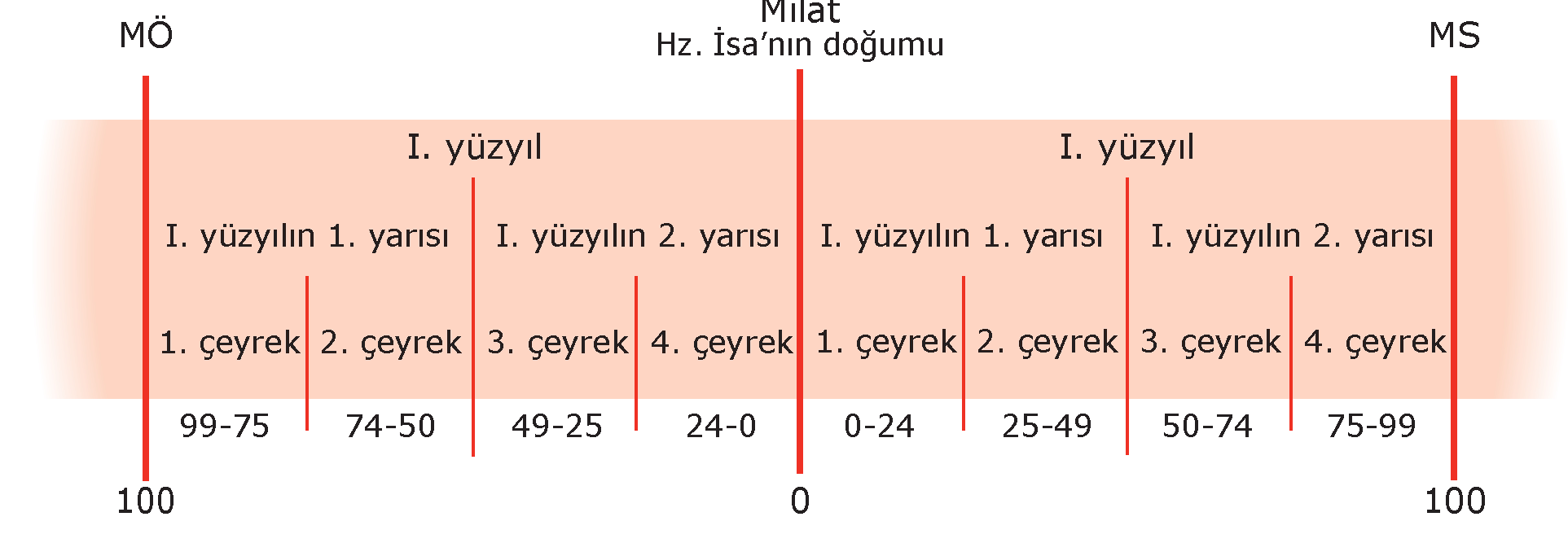
The century to which any year belongs can be calculated with a simple method. If a date has single digits such as 3, 5, 8 or double digits such as 18, 56, 92, it belongs to the 1st century. To find the century to which a three- or four-digit date belongs, the last two digits of the date are deleted and 1 is added to the remaining number. For example, the founding date of the Kök Türk State is 552. When the last two digits of this number are deleted, the number 5 remains. When 1 is added to this, VI of the year 552. It turns out that it belongs to the century. When the same process is applied to the year 1453, when Istanbul was conquered, the numbers 5 and 3 are dropped first. When 1 is added to the remaining 14, the conquest begins in the 15th century. It is found to have occurred in the century.
The concept of milestone is taken into consideration in the classification of centuries. Hz. The years before the birth of Jesus are called BC (before Christ), and the years after are called AD (after Christ). The concept of century theoretically begins in a year ending with a double zero and is used in the sense of “century period”. This concept dates back to the 16th century. It emerged in the century.
If the date given in century calculations consists of one and two digit numbers, it is the 1st century. If a date consists of a three-digit number, one is added to the hundreds place. If a date consists of a four-digit number, the numbers in the thousands and hundreds digits are considered two digits and one is added to this number. For example, the Conquest of Istanbul in 1453, XV. It occurred in the second half of the century and in the third quarter of the same century.



